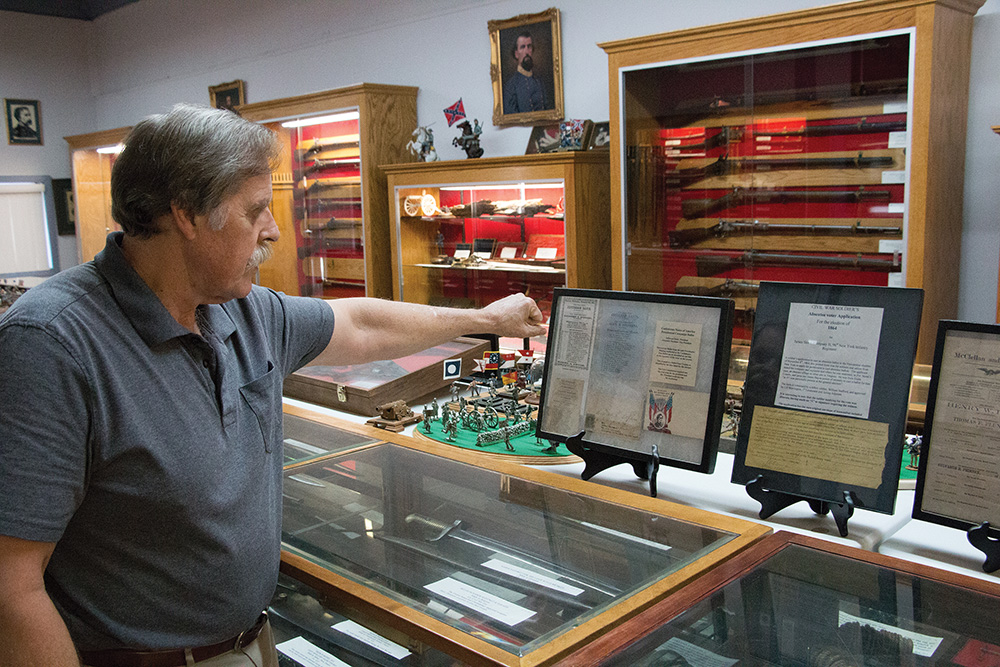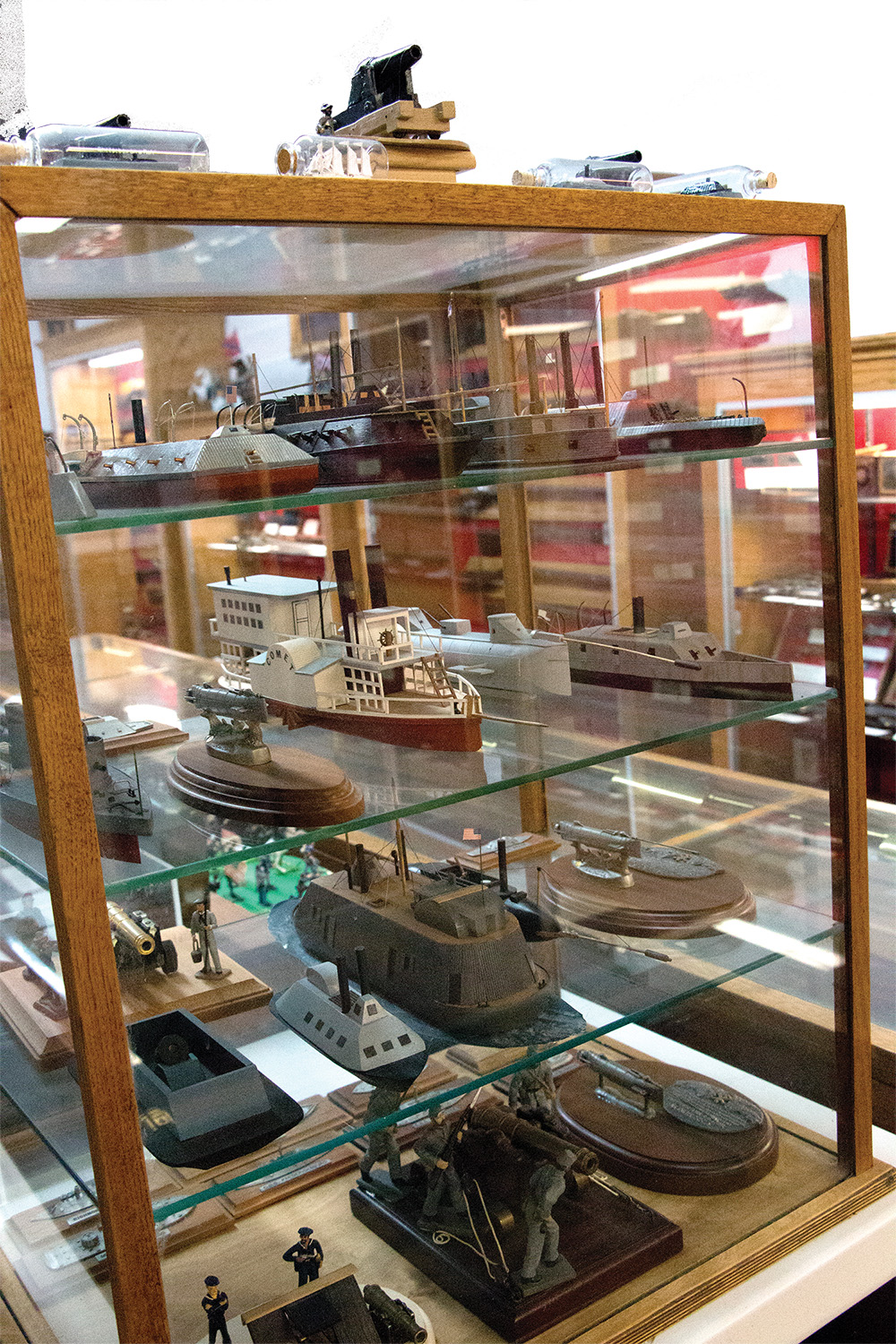
By Aaron Tanner
Located along the Tennessee River in the northern part of Alabama, Decatur was an important river port and railroad hub during the Civil War. Relics from that turbulent time in America’s history can be found in historic downtown Decatur at the Blue and Gray Museum of North Alabama.

From weapons to supplies to uniforms, the items on display at the Blue and Gray Museum are believed to be the largest privately owned collection of Civil War artifacts in the United States. Attached to the museum is a store where authentic Civil War relics can be purchased.
Museum Curator Robert Parham proudly claims his museum offers more for the visitor to see and experience than typical Civil War museums found at major battlefields such as Antietam, Shiloh or Vicksburg. “There is more stuff at our museum than the other battlefield museums,” Parham says. “A lot of people comment about how much we have.”
Although a majority of those who visit the museum have a vested interest in the conflict between North and South, even those who may not be interested at first usually leave the museum with a deeper interest in this particular era in the long history of our nation.
Among the weapons in the collection are swords, revolvers and pistols, muskets and carbines. One of the guns on display is a precursor to the sniper rifle called the Whitworth. While most bullets fired from rifles during that era traveled only a distance of 400 yards, bullets from a Whitworth could travel on average a distance of 800 to 1,000 yards.

Parham says the record distance for a bullet fired from a Whitworth was in Decatur and traveled 1,200 yards. “Imagine putting twelve football fields together end to end, that was the distance a bullet from a Whitworth traveled,” he says. He adds that those wanting to join the Confederate sniper team had to prove they could shoot a Whitworth before being given the responsibility of fighting on that particular squad.

There are other types of guns on display, including a Colt .36-caliber carbine, of which only 150 were made during the Civil War, and a Barnett Naval Gun, which was used by the Confederate Navy. Also on display is the gun carried by Union Gen. Joseph K. Mansfield, who was killed in the bloody Battle of Antietam in September 1862.
Also here is a sword carried by Alabama Union Cavalry Lt. Col. Orzo John Dodds, who went on to have a political career after the war. Those interested in artillery shells should pay attention to several cannonballs that were discovered in and around Decatur that are displayed behind glass cases.
Because there were fewer in circulation, Confederate weapons are considered more valuable today than Union weapons.
There are non-weapon items too. Actual voting tickets for both Jefferson Davis, the president of the Confederacy, and President Abraham Lincoln are here. Photography buffs will especially like the carte de visite photos, a style of small photograph used in the 1800s, of both Confederate and Union generals and politicians.

Photo by Michael Cornelison
The museum’s artifacts originally belonged to Robert Sackheim, who helped oversee the aerospace program at Marshall Space Flight Center in Huntsville before retiring in 2006. Sackheim developed an interest in the Civil War while an undergraduate at the University of Virginia, a state with several Civil War battlefields that is steeped in the era’s history.
Collected over the years, Sackheim’s collection includes items he bought and some that were unearthed on private property; it is illegal to dig for artifacts on land owned by the National Park Service.
Sackheim was running out of space in his house and was eager to share his collection with the public. He spoke with Parham, who sold Civil War collectibles; the two shared a passion for history of the era. “They would talk for hours,” says Sackheim’s wife, Babette.
Parham convinced Sackheim to put his collection on display in downtown Decatur. “Why have all this stuff if you can’t see it and enjoy it?” Parham says. Sackheim remodeled an old antique mall to house the museum, which opened in 2007, in hopes of educating future generations about a conflict that deeply divided a nation that was less than a century old at the time.
Although Sackheim passed away in 2013, Parham maintains the museum and gives narrated tours of the different displays. His vast knowledge surpasses what a student might read in a school textbook: Be prepared to spend a few hours or even come back for multiple visits to learn about an important chapter in our nation’s history.ν
For more information on the museum, located at 723 Bank St. in Decatur, see www.alabamacivilwarmuseum.com or e-mail Parham at robertparh@aol.com.





